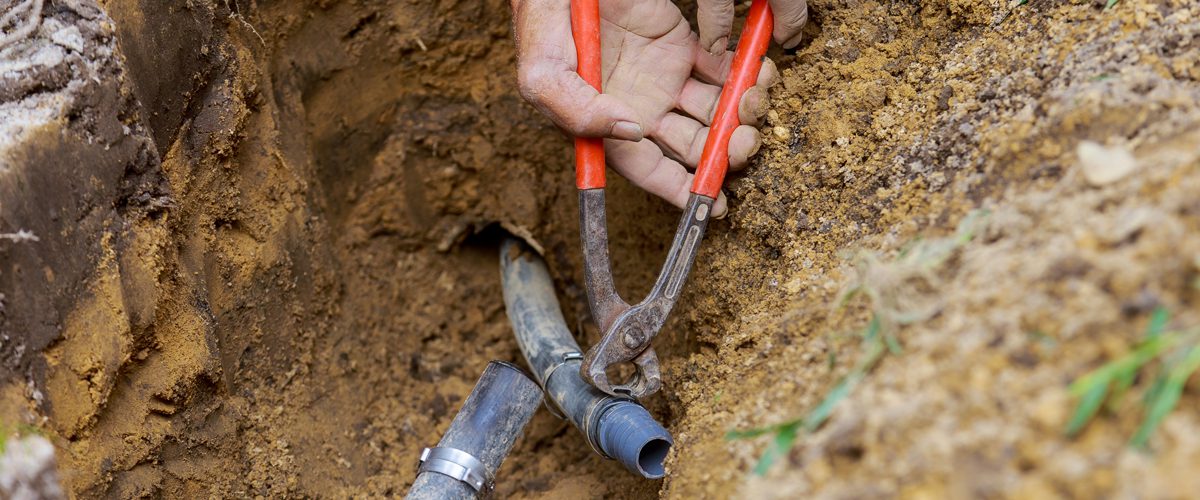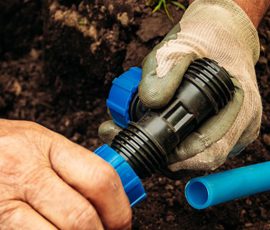
Installing an irrigation system is the best way to ensure your garden or lawn stays healthy, and it’s the easiest way to keep everything in shape with minimal effort. It’s a good idea to know a bit about your system so that you can get replacement parts or troubleshoot minor issues n your own. If you want to learn more about the features that make up your system, check out this article to see the best guide to the components of a sprinkler irrigation system.
Your sprinkler system has many different parts that allow the water to flow at the pressure rate you desire. Different systems rely on different parts, so today, we are going to be looking at the components of a basic irrigation system, but we’ll get into the details on how they can be different, depending on the system you choose.
What are the components of a sprinkler irrigation system?
1) Water Source
While this may not technically be a component, it is something that your sprinkler system will need. A water source doesn’t have to be a line that’s directly connected to your home, but it is the quickest and easiest method. Some people choose to use a rainwater source or even a pond for their irrigation systems, but these often require a bit more work in order to add the right amount of pressure and filters.
It can be challenging to get the right amount of pressure for your system if you are using an unstable water source and you risk blowing out your lines if you don’t do it correctly. If you are looking to use a complex system for your water sources, then you might want to call in the experts to help you out. Using sustainable sources like creeks or rain barrels is a great way to save on your water bill.
2) Pump
This will be the mechanism that adds pressure to the line so that the water is evenly distributed. Even if you are using an irrigation system that is low pressure, you will still likely need a pump to make sure that the water reaches the areas of the system where it needs to go. It’s one of the most important parts of a sprinkler irrigation system.
You will need to get the correct size for your system, so it’s a good idea to do some research before you start buying one to install on your own. Installing the wrong pump might make your system too overloaded, or it might not offer enough power to reach all of the lines. An irrigation expert will be able to give you the best advice on what type of system will work for you.
3) Controller
This is the part of the system that will control when the water will flow, and it also might control the pressure if you have a pump that is adjustable. A controller is important if you want to ensure that your system is not wasting your water, and it’s a good idea to be familiar with the controls in case you choose to adjust it yourself.
A controller can come in many different forms, but the most common ones have become digital. This allows you to control many different settings at once, and it’s much better than the old-school timers that systems used to rely on. You should choose a controller that is easy to use and understand instead of going for one that has all of the bells and whistles. You might find that you don’t need many of the different settings they offer for a simple setup, and you can always upgrade later if you need to.
4) Backflow Prevention
When you are pumping water through your system, the backflow prevention acts as a valve that keeps the water from going back into the water line. If you are using fertilizers in your irrigation system, then it is crucial to make sure your backflow prevention is installed and working correctly.
If the backflow component breaks, then you could risk contaminating your water system with fertilizers or other water-born particles. If your system is hooked up to the main water line, then this is extra important to worry about, and many cities will actually designate that you use one to prevent the entire system from becoming contaminated. It’s also part of the system that affects the pressure of the water, so it’s a good idea to check it often and replace it if it looks like it’s about to fail.

5) Sensors
Some systems come equipped with sensors that are designed to turn the water on and off, depending on the situation. Some can be installed within the soil to prevent overwatering by monitoring the moisture content. Others are made to detect things like weather conditions so that the system can turn itself off in the event of good rainfall.
If your system doesn’t come with sensors, it’s a good idea to look into figuring out a way to install them. They can be very handy for those who are looking to conserve water. It’s one of the easiest things you can do to make your system a bit more autonomous. If you are having difficulty installing them, you can contact an expert who is familiar with sprinkler installation to help you.
Now that we’ve talked about all of the main components of your sprinkler irrigation system, let’s get into detail on different pieces you might need, depending on the system you have installed.
Lines
Your lines are the pipes that carry the water throughout the yard. Your lines are typically made with a PVC pipe or plastic tubing, and they will either be placed under or above ground, depending on your system type. The lines are built to handle the weather and also handle the pressure that is being pushed through them by the system.
A distributor line is a line that runs from the water source to the primary system, while the sub main lines are the lines that will bring the water directly to the plants. You can use a combination of above and below-ground lines for your system, depending on what you need, and if you installed your sub mains correctly, you could run both line styles from the same distributor line.
You should only use products and pieces that are built for irrigation systems. Using the wrong components can destroy the system and cost you a lot in repairs. If you need to find a replacement for a piece on your professionally installed system, contact the folks who installed it, and they will likely be able to get it for you in a timely manner.
Emitters
These are the parts of the system that will provide the water to the plants, and they are typically a sprinkler or a drip style. Sprinkler emitters usually come in two different types: Rotary heads (these are built to spin around in a full circle to encompass a larger area) and fixed heads (these are made to spray in a fan pattern that covers a smaller section).
Drip irrigation systems are fantastic for plants that need water on their roots and those susceptible to leaf damage if sprayed with overhead sprayers. These irrigation systems are designed a bit differently, and their emitters are holes placed along the sprinkler lines. These tiny holes allow the water to seep into the soil at a slow rate, so you don’t have to worry about the plants being too overloaded.
What’s the best way to replace a component of my system?
If your sprinkler lines have issues, you might need to replace a part or two to fix it. If your irrigation system has been professionally installed, it will likely use the highest quality parts and components. If the company is unable to provide you with an exact replacement part, then they will probably be able to give you the best advice on where to find one that suits your system.
If you have installed the system yourself, then you should try and get the same part so that you know what you are dealing with. Upgrading one thing might mean adapting the rest of your system to go along with it, and it’s much easier to stick with the system that is already in place.
Troubleshooting your system is one of the best ways to find out which area is causing an issue, and it’s a good idea to know how to turn various areas on and off using the controls. More often than not, one area will be the primary source, and it will just end up trickling down to others, so being able to isolate the problem is the first step to finding the right way to fix it.
The best way to keep your system working is to have it regularly maintained by an irrigation expert who is familiar with the parts and how they work. A professionally installed system comes with so many benefits, and regular maintenance is usually included, so you don’t have to worry about it. They will be able to figure out your issue and get you the component you need so your irrigation system can keep working for you.



